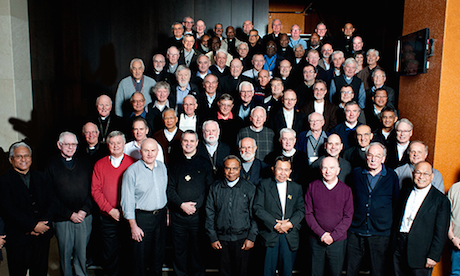When he was visiting New Zealand last year Cardinal Oscar Rodriguez Maradiaga, who is thought to be close to the Pope, said that there was a need for more cardinals from Oceania.
He said Oceania is not Australia by itself, and the region has a wide variety of nations and peoples.
So it is possible that the Pope may appoint at least one cardinal from among the more than 80 bishops who make up the Federation of Catholic Bishops Conferences of Oceania when he creates new Cardinals at a consistory he has called for 14 and 15 February 2015.
If the traditional practice is followed those who are to be to be made a cardinal will be announced mid-January.
At present there are no active Cardinals resident in Australia, New Zealand, Papua New Guinea/Solomon Islands and all of Oceania.
George Pell, formally archbishop of Sydney, is now working in the Vatican as secretary for the economy, and living in Rome.
The emeritus archbishop of Wellington, Thomas Williams, is retired.
The only Pasifika cardinal, the late Pio Taufinu’u, was appointed by Pope Paul VI as a personal gesture, soon after his Papal visit to Samoa.
Because Oceania encompasses so many independent nations, covering such a vast area, it is hard to predict which of its bishops would be likely to be made a cardinal.
The Pacific Regional Seminary which serves most of Oceania, is in Suva, Fiji, and its recently appointed Archbishop, Peter Loy Chong, has attracted some attention.
There has never been a cardinal appointed from among the bishops of Papua New Guinea and the Solomon Islands.
Almost two-thirds of the voting cardinals (69) still come from the global north, while two-thirds of the world’s Catholic population today lives in the global south.
When Pope Francis holds the consistory, there will be 110 voting cardinals; those under 80.
Two other cardinals turn 80 in March and April, so Francis may appoint 10-12 new voting cardinals.
Between April and June a further three cardinals turn 80, so in the course of the next year, Pope Francis will therefore have the option of creating 15 new voting cardinals.
According to Universi Dominici Gregis, St John Paul II’s apostolic constitution governing conclaves, the maximum number of cardinal electors must not exceed 120, however a pope is not obliged to follow the rules.
When he made the announcement of the consistory last Friday, Fr Lombardi, the director of the Holy See’s press office also announced two other important appointments: a meeting of the Council of Cardinals for the reform of the Roman Curia (9 to 11 February) and a meeting of the College of Cardinals (12 to 13 February) to discuss matters relating to the reorganisation of the Holy See.
Sources
